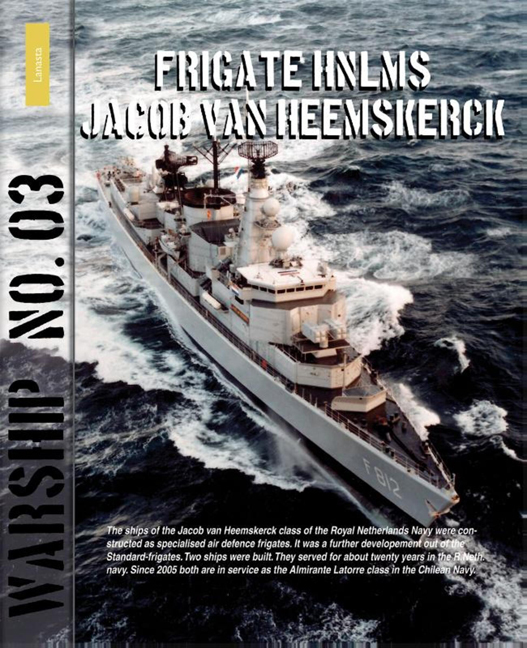Book contents
Frigate HNLMS Jacob Van Heemskerck
Published online by Cambridge University Press: 04 April 2024
Summary
Jacob van Heemskerck
Jacob van Heemskerck was born in Amsterdam on 13 March 1567. As a young man he attended classes in the art of navigation. At 28 he got the opportunity as cargo superintendent for the States General to make a voyage of discovery to find another way to the East Indies. This voyage failed. In 1596 the city of Amsterdam paid for a new expedition by two ships to find a Northern route to the Indies. This voyage has become famous for the wintering of Willem Barentsz on Nova Zembla. In spite of the failure of this voyage Jacob van Heemskerck was sent to the Indies as an Admiral. On the return voyage he captured a rich Portuguese prize.
In 1607 he commanded a fleet of 26 ships to inflict as much damage as possible on the Spanish fleet. Although the 21 heavily armed Spanish ships were anchored in the Bay of Gibraltar under the protection of the guns of the fortress he decided to attack. A shot from the second round from the Spanish Admiral's ship killed him.
In spite of that the Spanish fleet was defeated. The body of the Admiral was taken to Amsterdam, where he was buried in the Old Church with much pomp and circumstance on 8 June 1607.
SHIPS WITH THE NAME JACOB VAN HEEMSKERCK
The first ship with this name was the yacht on which Abel Tasman sailed when he discovered the island which he called Van Diemensland which later became Tasmania.
During this voyage he also discovered New Zealand in December 1642, the Fiji Islands and the Friendship Islands in 1643. This Heemskerck is considered to be a merchant vessel and therefore not
included in the number of navy ships named after Admiral J. van Heemskerck.
The second Heemskerck was a schooner built in 1803 which served as flagship for admiral VerHuell and operated against Dunkirk. It was broken up in 1821.
The third Heemskerck was a heavily armed coastal defence ship launched in 1906. In 1908 she took part in operations against Venezuela. At the start of the First World War she remained in the Caribbean because of the presence of the German cruiser Karlsruhe. At the outbreak of the Second World War she served as ‘battery ship’ in the harbour of IJmuiden and was scuttled by her crew. She was raised after the war.
- Type
- Chapter
- Information
- Warship 3Frigate HNLMS Jacob van Heemskerck, pp. 2 - 48Publisher: Amsterdam University PressFirst published in: 2024



